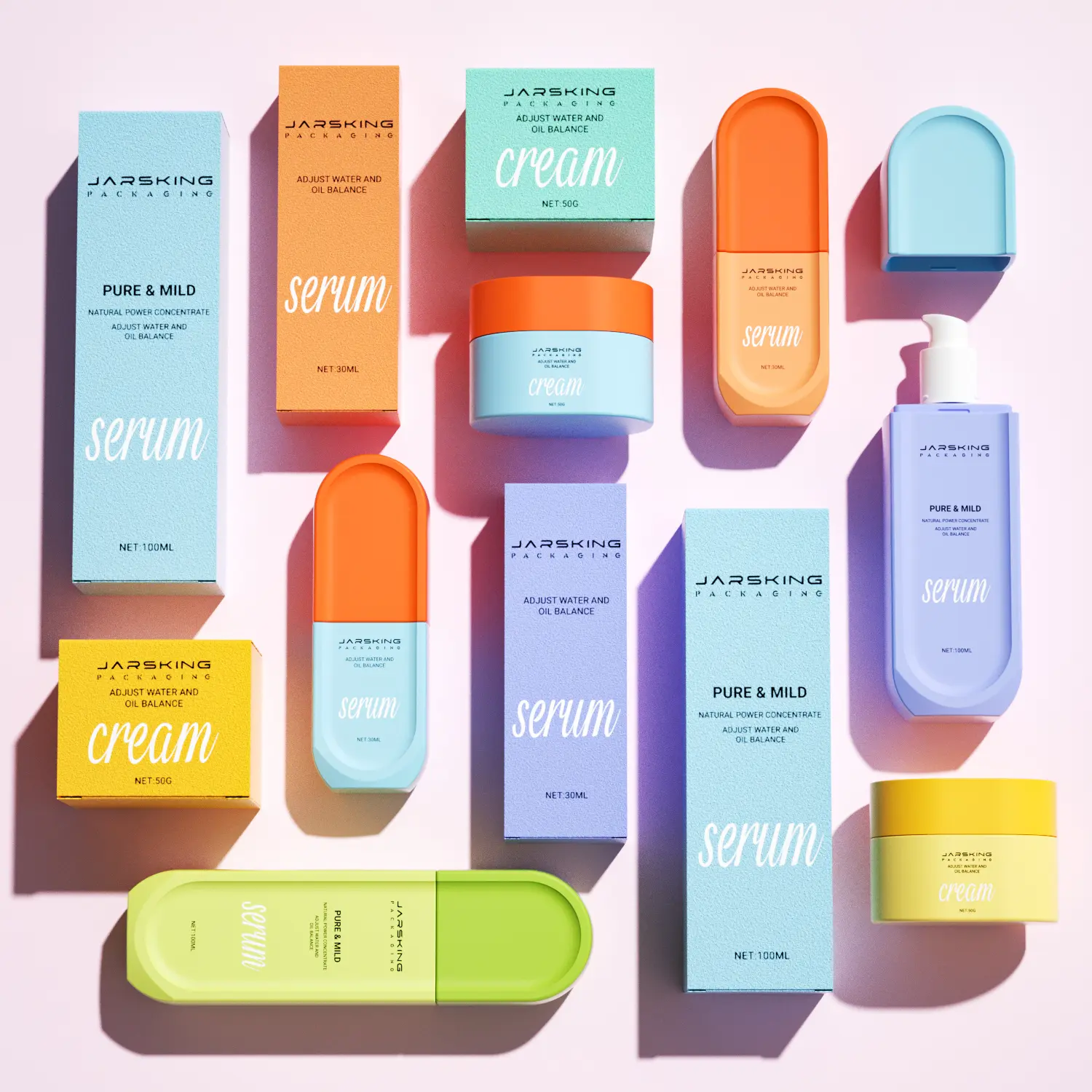In the beauty and personal care industry, packaging has evolved from a simple protective shell into a dynamic brand ambassador. For Gen Z—the digital-native, eco-conscious generation—packaging is not just about utility; it’s about experience, emotion, and values. The rise of social media and the demand for authenticity have made packaging a central part of the product narrative. As brands compete for attention on crowded shelves and digital platforms, those that blend sustainability with dopamine-driven design are winning the hearts and wallets of Gen Z.
At Othilapak, we believe that eco packaging can—and must—feel luxurious, emotive, and desirable. In fact, for today’s most influential consumers, it’s not optional—it’s imperative. This guide explores how to harmonize eco-conscious materials with emotionally resonant design to captivate Gen Z.
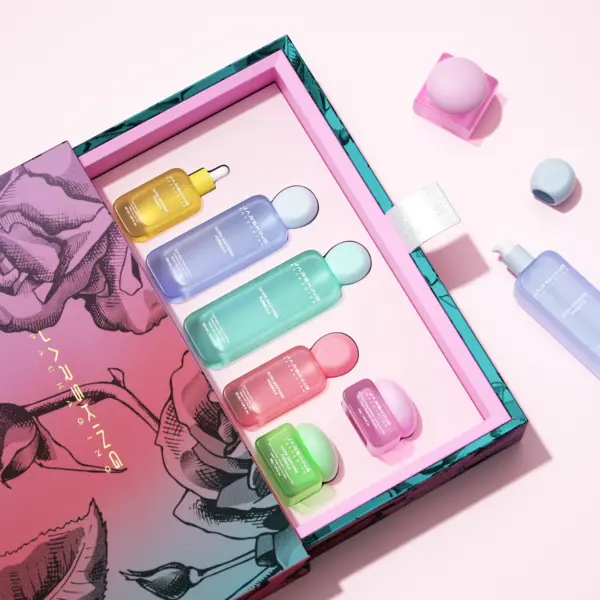
1. The New Consumer Formula: Emotion + Sustainability
Gen Z is not just influencing the packaging industry—they’re revolutionizing it. This generation, raised in the digital age and shaped by climate awareness, demands more from the products they buy and the brands they support. For Gen Z, packaging is no longer just a functional shell; it’s a visual statement, an emotional experience, and a reflection of personal and planetary values. Their purchasing decisions are guided by a new equation: Emotion + Sustainability = Brand Loyalty.
Packaging Must Reflect Their Values
Gen Z consumers actively seek out brands that align with their beliefs, especially around environmental and social responsibility. They scrutinize packaging for signs of:
- Sustainable materials like recycled glass, biodegradable plastics, or refillable systems.
- Minimalist, low-waste design that eliminates excess.
- Certifications and transparency—from cruelty-free and vegan logos to carbon-neutral production claims.
If your packaging doesn’t visibly showcase its sustainability, it risks being overlooked—no matter how good the product inside is.
Premium Look, Digital Appeal
Gen Z’s aesthetic standards are exceptionally high. They expect packaging to:
- Feel luxurious in hand with tactile elements like frosted glass, embossed textures, or magnetic closures.
- Photograph beautifully—because if it’s not shareable, it’s forgettable. Packaging must be “Instagrammable”, built for unboxings, shelfies, and digital storytelling.
- Be bold and unique, using color, form, and finish to stand out both on physical shelves and online feeds.
This generation doesn’t believe sustainability should come at the cost of design. They want both—and they want it now.
Transparency and Storytelling Are Non-Negotiable
Gone are the days of vague greenwashing. Gen Z craves authentic narratives and visible purpose. They ask:
- Who made this?
- Where was it sourced?
- How does it reduce impact on the planet?
- Why is this packaging a better choice?
Storytelling—through printed messaging, QR codes, or interactive digital experiences—can bridge the emotional gap between consumer and brand. Packaging is the ideal vehicle to tell your sustainability story, not just in words but in form, function, and feel.
The Takeaway: Design and Sustainability Must Work as One
For brands targeting Gen Z, design without substance feels empty—and sustainability without style feels unappealing. The most successful packaging today achieves harmony between the two. It creates emotional resonance through beauty, quality, and storytelling, while proving its environmental commitment through materials, production, and transparency.
In this new era, packaging isn’t just how you deliver your product—it’s how you earn trust, spark joy, and inspire loyalty.

Dopamine Design Meets Eco Materials
In the age of emotional branding, packaging must do more than protect a product—it must spark joy. Enter dopamine design, a rapidly growing trend that uses vibrant colors, pleasing textures, and playful forms to deliver an instant mood boost. For Gen Z, whose behaviors are shaped by fast content, constant stimulation, and a craving for authentic self-expression, packaging becomes a dopamine hit—visually, physically, and emotionally.
But in today’s conscious consumer landscape, feel-good design isn’t enough. It must also be planet-friendly. The result? A new generation of packaging that balances emotional appeal with ecological responsibility—where sensory pleasure meets sustainable practice.
Examples of Dopamine-Driven, Sustainable Packaging
These packaging solutions strike the perfect harmony between joy-inducing design and ethical materials, proving that fun and function can coexist beautifully:
Matte-Finish Refillable Pumps
Sleek and smooth to the touch, matte airless pumps feel modern, minimal, and calming. They evoke a sense of cleanliness and reliability while supporting a circular model through reusability.
Example: The Ordinary’s airless pump bottles pair industrial design with a minimalist aesthetic—offering a sense of control and purity that aligns with both dopamine design and sustainability values.
Soft-Touch Kraft Paper Boxes
Earthy, warm, and biodegradable, kraft packaging delivers tactile satisfaction while reinforcing an eco-conscious image. The subtle grain, natural hue, and soft-touch finish feel artisanal and grounded.
Example: Lush uses recycled kraft paperboard for its gift boxes, creating a handmade, feel-good moment that doubles as a sustainable gesture.
Bold Pastel Bottles Made from Recycled PET
Color is key in dopamine design, and soft yet saturated pastels—lavender, mint, blush pink—evoke positivity and freshness. When crafted from post-consumer recycled PET, they tell a story of both joy and responsibility.
Example: Glossier’s iconic pink pouch and translucent bottles reflect a playful, instantly recognizable aesthetic—all while using recycled and recyclable materials.
Minimalist Glass Jars with FSC-Certified Wood Caps
These jars bring together timeless elegance and eco-innovation. The weight and clarity of glass evoke luxury, while sustainably sourced wood caps offer a tactile contrast—natural, warm, and visually serene.
Example: Herbivore Botanicals marries Instagram-worthy simplicity with FSC-certified materials, giving eco-luxury a new visual language.
The Sensory Trifecta: Eye, Hand, Heart
Dopamine packaging works across three sensory planes:
Visual: Bold yet soft colors, clear forms, and clean design trigger emotional engagement.
Tactile: Finishes like soft-touch, wood grain, or glass provide a premium, grounding feel.
Emotional: Thoughtful design choices—paired with visible sustainability—create trust and delight.
It’s not just about being eco—it’s about being eco-delightful. Packaging that appeals to the senses can also appeal to the conscience, reinforcing the idea that what feels good should also do good.
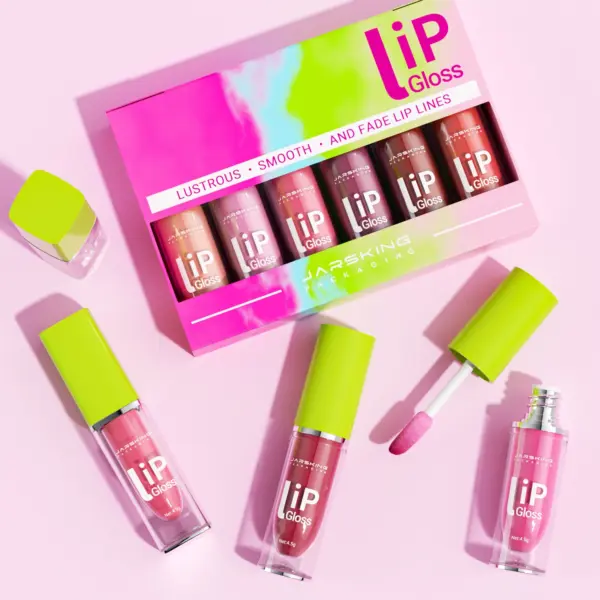
Sustainable Doesn’t Mean Boring
For too long, sustainable packaging was seen as dull, muted, or overly utilitarian. But that myth has been shattered. Today’s eco-conscious consumers—especially Gen Z and Millennials—demand packaging that’s visually captivating, emotionally engaging, and environmentally responsible. And brands are rising to the challenge.
Sustainable materials no longer limit design—they inspire it. With the right creative direction and material innovation, green packaging can be just as bold, beautiful, and luxurious as traditional formats. Sometimes even more so.
How to Make Eco Packaging Exciting
- Embossed Logos on Eco Materials
Embossing adds a subtle yet luxurious tactile dimension, turning even the most minimalist design into a premium experience. When applied to compostable or recycled substrates, it delivers elegance with a conscience.
Example: Pangaia elevates their compostable garment bags with blind-embossed branding—making a simple mailer feel like a designer package.
- Vibrant Colors with Soy-Based Inks
Sustainable doesn’t mean colorless. Soy- or algae-based inks allow for high-impact graphics with minimal environmental harm, making your brand pop while staying planet-friendly.
Example: Patagonia uses soy inks to print bold, colorful graphics on recycled cardboard, proving that visual energy and sustainability can go hand in hand.
- Layered Storytelling with Labels and Inserts
Sustainable packaging should tell a story—and every layer can communicate your mission. Through creative copy, QR codes, or playful internal messaging, brands can educate and entertain while reinforcing their values.
Example: Who Gives A Crap toilet paper turns every label into a micro-story—blending humor, impact data, and brand purpose in a way that’s both engaging and transparent.
- Refillable, Reusable, and Elegant Formats
Refillable packaging is not just functional—it can be a design feature in itself. When done right, it encourages brand loyalty, repeat purchases, and waste reduction, all while looking and feeling premium.
Example: Kjaer Weis revolutionized beauty packaging with metal compacts designed to be refilled over and over—elegant enough for display, sustainable enough for modern values.
Our Materials, Your Vision
At Othilapak, we help brands break free from the false choice between sustainability and beauty. Our custom solutions combine form, function, and environmental responsibility. Choose from:
- Glass for timeless elegance and recyclability
- Bioplastics and PCR (post-consumer resin) for innovative low-waste alternatives
- Bamboo and FSC-certified wood for natural, tactile finishes
- Aluminum for sleek, refillable systems
- Compostable pouches for flexible, earth-friendly options
All designed to look as good as they feel, and crafted to meet the demands of today’s conscious consumer.
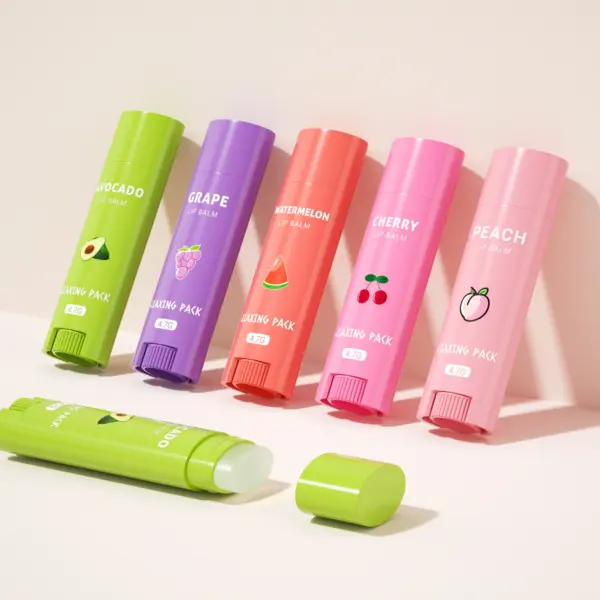
2. What’s Working for Gen Z Brands in 2025
Gen Z is rewriting the rules of packaging—and brands that want to stay relevant must follow suit. This generation doesn’t just buy a product; they buy into a story, a value system, and an aesthetic. In 2025, the most successful Gen Z–focused brands are mastering the intersection of function, emotion, and ethics, especially in their packaging. Here’s what’s trending—and more importantly, what’s converting.
3. Refillable Packaging Sets
Reduce Waste, Build Loyalty
Refillable packaging isn’t just a sustainability play—it’s a loyalty driver. Skincare and beauty brands are increasingly offering refillable jars, airless pumps, and cartridge systems using eco-responsible materials like recycled PETG, aluminum inserts, and bio-resins. These systems encourage consumers to stay within the brand ecosystem.
Example: Tatcha has introduced sleek refillable skincare jars that not only cut down on single-use plastic but also create a luxury ritual that customers want to repeat.
Closed-Loop Circularity
More brands are investing in closed-loop systems, where packaging is returned, refilled, and reused—creating a sense of community and long-term engagement.
Example: Loop by TerraCycle partners with brands like Pantene and The Body Shop to offer refillable packaging delivered in durable containers, then picked up for cleaning and reuse, closing the loop with style and convenience.
4. Color Psychology & Visual Joy
Emotional Palettes That Resonate
Colors are more than aesthetic—they’re emotional cues. Gen Z responds to packaging that uses gentle pastels, muted greens, and dreamy sunset tones, all of which create calming, inclusive, and mood-lifting associations.
Example: Rare Beauty uses soft, approachable tones across its packaging, reinforcing its messaging around mental health, warmth, and self-acceptance.
High-Impact, Scroll-Stopping Hues
While soft tones soothe, bold colors excite. Strategic use of vibrant hues can differentiate a product on crowded shelves or feeds—especially when paired with strong brand identity.
Example: Fenty Beauty utilizes rich, saturated tones that reflect diversity, confidence, and modernity—instantly recognizable and visually magnetic.
5. Natural Finishes & Tactile Materials
Nature-Inspired Textures
Packaging with earthy finishes—like embossed kraft paper, frosted glass, stone-textured surfaces, or wooden caps—feels grounded and intentional. These tactile details subtly communicate eco-consciousness and authenticity.
Example: Aesop is a masterclass in natural, sensory packaging. Their apothecary-inspired glass bottles and minimalist kraft boxes create a sense of calm, heritage, and trust.
The Multi-Sensory Unboxing
From the soft glide of a drawer box to the satisfying “click” of a closure, Gen Z loves a packaging experience that delights all senses. Touch, sound, and even weight contribute to a deeper, more memorable connection with the brand.
Example: Glossier’s pink bubble wrap pouch became a cult favorite not only for its look but for its soft, squishy texture that made opening it feel like a treat.
6. QR Codes for Storytelling & Transparency
Direct Access to Impact Stories
For Gen Z, transparency isn’t optional—it’s expected. Scannable QR codes on packaging are being used to reveal the journey behind the product: sourcing practices, carbon impact, usage instructions, refill options, and recycling guides.
Example: Dr. Bronner’s includes QR codes that link to detailed information on everything from fair trade ingredients to environmental impact, empowering consumers to shop consciously.
The Bottom Line for 2025:
To resonate with Gen Z, packaging must do more than contain—it must connect. It needs to be:
Visually delightful
Emotionally honest
Materially sustainable
Digitally interactive
Brands that blend all of the above are not just selling products—they’re building movements.

7. Othilapak: Your Partner for Emotionally Eco Packaging
At Othilapak, we believe packaging should do more than hold a product—it should hold meaning. That’s why we specialize in emotionally sustainable packaging solutions that marry thoughtful design with environmental responsibility.
In an era where consumers seek both beauty and purpose, our turnkey services empower brands to express identity, inspire connection, and reduce impact—all in one cohesive solution.
8. What We Provide:
-
Material Consulting
Our team helps you choose the best eco-conscious materials to match your brand values, product needs, and regional regulations—from PCR plastics and biopolymers to FSC-certified papers, bamboo, glass, and refillable systems.
-
Bring your vision to life with full creative support:
3D renderings and CAD mockups
Moodboard development for color and form
Finish, texture, and closure testing for optimal sensory appeal
We ensure your packaging looks and feels exactly how your brand should.Small MOQ Options: Perfect for indie and influencer-led brands.
-
Small MOQ Options
Perfect for indie startups, boutique collections, and influencer-led lines. You don’t need a massive order to create packaging that feels premium and purposeful.
-
Fast Prototyping & Global Sourcing
With a robust international supply network, we help you accelerate speed-to-market while ensuring consistent quality and responsible sourcing. Whether it’s a custom mold or a ready-to-go set, we make production feel seamless.
9. We Help You Package Your Purpose—Beautifully
Whether you’re launching a clean beauty startup, rebranding a legacy product, or creating a limited-edition drop, we turn your packaging into a powerful brand expression. One that resonates with today’s mindful, design-savvy consumers.
10. Packaging Is a Feeling
In 2025 and beyond, packaging is more than a container—it’s:
A first impression
A sensory experience
A statement of your values
At Othilapak, we know that sustainability and emotional design are no longer optional—they are the new standard for success in beauty and personal care.
Let us help you create packaging that doesn’t just meet expectations—it moves people.
11. Industry Insights and Professional Expansion
The Psychology of Packaging
Donald Norman’s Three Levels of Design—Visceral, Behavioral, and Reflective—are crucial for creating packaging that delivers emotional value. Packaging must be visually appealing, easy to use, and meaningful in the long term. Brands like ECLO and HALF MAGIC use natural, compostable materials to create packaging that is both stylish and responsible, while CADENCE’s magnetic capsules and Tetris-inspired skincare bottles add fun and practicality, encouraging reuse and reducing waste.
Sensory Design and Emotional Connection
Sensory packaging design is about more than looks—it’s about creating a memorable, multi-sensory experience. From the soft matte exterior of a premium product box to the crisp crackle of layered tissue paper, these elements enrich the unboxing ritual and foster brand loyalty. Brands that leverage color psychology, tactile finishes, and storytelling can create deeper emotional connections with their audience.
- Sight:Visual elements like color, shape, and typography are the first aspects consumers notice. For example, Coca-Cola’s iconic red bottle is instantly recognizable and evokes nostalgia and happiness.
- Touch:Tactile finishes such as embossing, soft-touch coatings, and velvet textures create a premium feel. Example: Apple’s minimalist packaging, which uses high-quality paper and precise engineering for a satisfying unboxing experience.
- Smell:Scented packaging or inserts can trigger memories and emotions. Example: Lush’s bath bombs, which are often wrapped in biodegradable paper that carries a subtle fragrance.
- Sound:The sound of a magnetic closure or the rustle of tissue paper adds to the sensory experience. Example: Tiffany & Co.’s iconic blue box, which is as much about the sound of the ribbon being untied as the visual impact.
- Taste:While less common in beauty, taste can be incorporated through edible packaging or samples. Example: Some chocolate brands use edible wrappers for a unique experience.
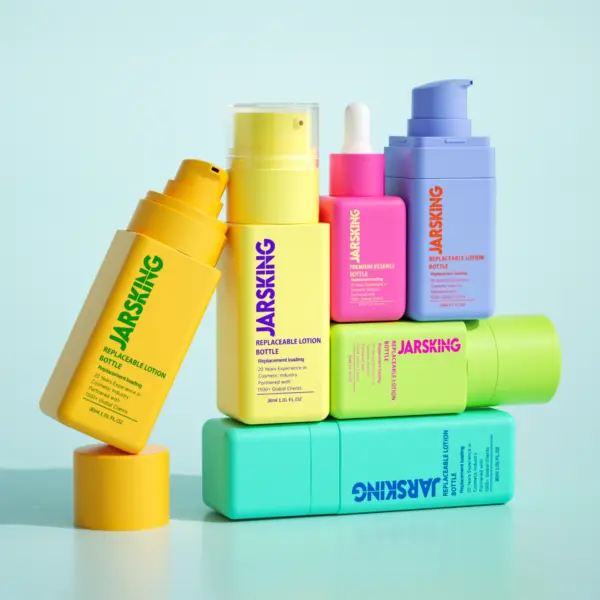
12. Sustainability as a Competitive Advantage
According to McKinsey, over 60% of beauty consumers prefer brands with clear sustainability commitments. Refillable packaging, recycled materials, and compostable options are now industry standards, not niche offerings. Brands that communicate their sustainability efforts clearly and transparently—through labeling, QR codes, and storytelling—build trust and loyalty with Gen Z.
- Enhanced Brand Image:Sustainable packaging practices can significantly bolster a company’s brand reputation, making it appear more responsible and committed to the environment. Example: Patagonia’s use of recycled materials and transparent labeling has made them a leader in sustainable fashion.
- Cost Savings:Although the initial investment in sustainable packaging solutions may seem costly, businesses can save money in the long run through reduced material waste, lower energy consumption, and the reuse of materials.
- Compliance with Regulations:As governments worldwide continue to implement bans on single-use plastics and stricter regulations on packaging waste, adhering to sustainable packaging practices helps businesses avoid legal repercussions and reputational damage.
- Innovation and Differentiation:Sustainable packaging solutions often require innovative approaches and designs, enabling companies to stand out in a competitive marketplace.
The Rise of Dopamine Design
Dopamine design is characterized by bold colors, playful patterns, and unconventional typography. It’s engineered to capture attention instantly and evoke positive emotions. This trend is especially powerful for Gen Z, who crave instant gratification and self-expression. Brands that embrace dopamine design—while staying true to their sustainability values—stand out on crowded shelves and social media feeds.
- Bright Colors and Bold Shapes:These elements trigger the brain’s reward system, making consumers feel good and encouraging them to engage with the brand. Example: Goodles’ mac and cheese boxes, which use vibrant colors and playful graphics to stand out in the grocery aisle.
- Playful Patterns and Typography:Unconventional fonts and patterns add personality and fun. Example: Omsom’s Asian meal kits, which use bold typography and colorful illustrations to celebrate cultural identity.
- Interactive Elements:Packaging that invites interaction—such as peel-off stickers, hidden messages, or AR experiences—creates a sense of discovery and delight. Example: Fly by Jing’s chili crisp packaging, which features playful illustrations and interactive elements.
The Future of Emotional Packaging
Packaging design is no longer a purely aesthetic issue, but a strategic tool capable of influencing consumer emotions and decisions. As brands seek to stand out in increasingly saturated markets, the ability to generate an emotional connection through packaging becomes a key differentiator.
- Innovation in Materials:New materials such as biodegradable polymers, plant-based plastics, and upcycled fabrics are redefining what’s possible in packaging. Example: Dell’s use of mushroom-based packaging for electronics, which is both protective and compostable.
- Interactive Technology:Augmented reality (AR) and QR codes are being used to create immersive, interactive experiences. Example: Nestlé’s use of QR codes on packaging to share sustainability stories and recycling instructions.
- Mass Customization:Digital printing technology enables brands to create customized, on-demand packaging, which minimizes overproduction and material waste. Example: Coca-Cola’s “Share a Coke” campaign, which personalized bottles with names and messages.
- Storytelling and Transparency:Packaging is increasingly being used as a storytelling tool, sharing sustainability messages and brand values directly on the product. Example: Who Gives A Crap’s playful, informative labels, which educate consumers about their impact.
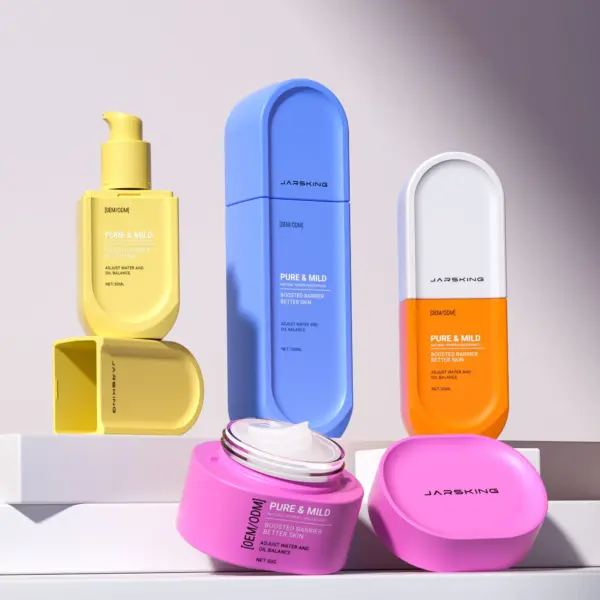
13. Case Studies: Brands Leading the Way
Lush Cosmetics: Packaging-Free Innovation
Lush has become synonymous with sustainability in packaging. Their “naked” range features completely packaging-free products like shampoo bars and bath bombs. Where packaging is needed, they use 100% recycled and recyclable materials. Lush also educates customers with clear, simple messages on their packaging. Their dedication to reducing waste has made packaging a key part of their brand story and a prime example of how brands can innovate successfully while embracing sustainable packaging ideas.
Nestlé: Commitment to Recyclability by 2025
Nestlé is a global leader integrating green packaging across its product lines. Their pledge to make all packaging recyclable or reusable by 2025 has driven the development of paper-based food wraps and dissolvable capsules. Through partnerships with eco-friendly packaging companies, Nestlé is transforming the food industry. Their efforts show how large companies can drive real change in sustainable packaging by investing in R&D, working closely with suppliers, and improving infrastructure.
Dell Technologies: Eco-Friendly Innovation in Electronics
Dell uses mushroom-based and bamboo-based packaging—a standout in biodegradable packaging for electronics. After thorough testing, these materials were shown to be strong enough to protect tech products. Dell combines custom eco-friendly packaging with both functionality and innovation. This smart use of natural materials shows what’s possible and proves that tech companies can align their packaging with sustainability goals, earning greater consumer trust and industry recognition.
The Ordinary: Minimalism Meets Functionality
The Ordinary’s packaging is a masterclass in minimalist design that doesn’t sacrifice functionality or sustainability. Their airless pump bottles are made from recyclable materials and are designed to be refillable, reducing waste and encouraging repeat purchases. The clean, clinical aesthetic appeals to Gen Z’s desire for transparency and authenticity, while the tactile, weighty feel of the packaging conveys quality and trust.
Glossier: Instagrammable and Sustainable
Glossier’s iconic pink bubble wrap pouch is made from recycled materials and is instantly recognizable. The brand’s playful, pastel packaging is designed to be shared on social media, creating a sense of community and belonging among fans. Glossier’s approach demonstrates how sustainable packaging can be both visually engaging and environmentally responsible.
Patagonia: Transparency and Trust
Patagonia’s use of recycled materials and transparent labeling has made them a leader in sustainable fashion. Their packaging is simple, functional, and clearly communicates their commitment to the environment. Patagonia’s approach shows how sustainability can be a powerful differentiator and a source of brand loyalty.
14. The Science Behind Emotional Packaging
Color Psychology
Color is a massive part of brand recognition and emotional response. Green is often linked to sustainability, while red conveys energy and excitement. Pastels evoke softness and approachability, while bold hues create a sense of fun and optimism. Brands that understand and leverage color psychology can create packaging that resonates deeply with their target audience.
Typography and Imagery
The choice of font and imagery can reflect a brand’s personality and values. Minimalist sans-serif fonts convey modernity, while ornate scripts suggest luxury. High-resolution images or illustrations can highlight product features and build a narrative. For example, a rustic illustration of a farm might appeal to consumers seeking organic products.
Tactile and Sensory Elements
Texture, weight, and finish all contribute to the sensory experience of packaging. Matte finishes, embossing, and soft-touch coatings create a premium feel, while heavier packaging subconsciously signals luxury and value. Thoughtful design features like magnetic closures, ribbons, and layered packaging create ritualized moments of joy and anticipation.
Unboxing Rituals
The unboxing experience has become a key moment of connection between brand and consumer. Brands that invest in creating memorable unboxing rituals—through thoughtful design, interactive elements, and sensory touches—can foster deeper emotional connections and encourage repeat purchases.
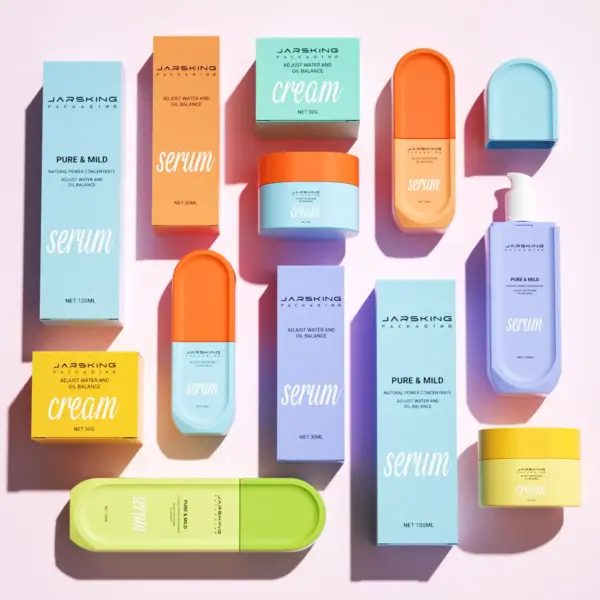
15. The Business Case for Sustainable, Emotional Packaging
Building Brand Loyalty
Sustainable packaging strengthens brand loyalty by demonstrating environmental responsibility and resonating with eco-conscious consumers, creating a positive emotional connection. This emotional connection is far more powerful than simple transactional satisfaction and can turn customers into brand advocates.
Social Signaling and Value Congruence
Consumers often use the products they purchase as a way to communicate their identity and values to others. Choosing products with sustainable packaging can be a way to signal to peers that they are environmentally conscious and committed to responsible consumption. This social signaling aspect can further solidify brand loyalty, as consumers become invested in maintaining a consistent image.
Differentiation in a Crowded Market
In a market saturated with options, brands that stand out are those that offer a unique combination of sustainability and emotional design. By blending eco-conscious materials with dopamine-driven design, brands can create packaging that is both visually striking and environmentally responsible, setting themselves apart from competitors.
Future-Proofing Your Brand
As environmental regulations become stricter and consumer expectations continue to rise, brands that invest in sustainable, emotionally resonant packaging are future-proofing their business. By aligning with the values of Gen Z and other eco-conscious consumers, brands can build long-term loyalty and resilience in a rapidly changing market.
16. Practical Strategies for Brands
Choose the Right Materials
- Biodegradable and Compostable Materials:Plant-based plastics, cornstarch, and biodegradable paper fibers break down naturally over time, reducing long-term waste.
- Recyclable and Upcycled Materials:Cardboard, aluminum, and PET plastic made from post-consumer recycled content help promote a circular economy.
- Refillable and Reusable Containers:Encourage consumers to return and refill, reducing waste and building loyalty.
Leverage Dopamine Design
- Bright Colors and Bold Patterns:Use vibrant, mood-boosting tones to capture attention and evoke positive emotions.
- Playful Typography and Graphics:Add personality and fun to your packaging with unconventional fonts and illustrations.
- Interactive Elements:Incorporate peel-off stickers, hidden messages, or AR experiences to create a sense of discovery and delight.
Tell Your Story
- Clear Messaging:Use labels and packaging to communicate your sustainability journey and brand values.
- QR Codes and AR:Link to behind-the-scenes videos, refill guides, and recycling instructions to engage consumers and build trust.
- Layered Storytelling:Use packaging as a canvas to share your brand’s mission, impact, and community.
Create a Memorable Unboxing Experience
- Tactile Finishes:Use embossing, soft-touch coatings, and velvet textures to create a premium feel.
- Thoughtful Design Features:Add magnetic closures, ribbons, and layered packaging to create ritualized moments of joy and anticipation.
- Sensory Touches:Incorporate scent, sound, and even taste (where appropriate) to enrich the unboxing ritual.
Partner with Experts
- Material Consulting:Work with packaging experts to find the right eco materials for your market and aesthetic.
- Custom Design Support:Use 3D mockups, moodboards, and finish testing to bring your vision to life.
- Small MOQ Options:Ideal for indie and influencer-led brands looking to test new concepts.
- Fast Prototyping and Global Sourcing:Get to market quickly with a global network of suppliers.
The Future of Packaging: Innovation and Opportunity
The future of packaging is bright, with endless opportunities for innovation and creativity. As brands continue to push the boundaries of what’s possible with sustainable materials and emotionally resonant design, the possibilities are limitless.
- Innovative Materials:New materials such as biodegradable polymers, plant-based plastics, and upcycled fabrics are redefining what’s possible in packaging.
- Interactive Technology:Augmented reality (AR) and QR codes are being used to create immersive, interactive experiences.
- Mass Customization:Digital printing technology enables brands to create customized, on-demand packaging, which minimizes overproduction and material waste.
- Storytelling and Transparency:Packaging is increasingly being used as a storytelling tool, sharing sustainability messages and brand values directly on the product.
17. Conclusion: Packaging Is a Feeling
The most successful beauty brands in 2025 understand that packaging is no longer just a box. It’s an experience. A message. A memory. At Othilapak, we believe sustainability and emotional design aren’t competing goals—they are the future of beauty.
By blending eco-conscious materials with dopamine-driven design, brands can captivate today’s most influential consumers and build lasting emotional connections. The time to act is now—let’s create packaging that feels as good as it looks, and as good for the planet as it is for your brand.


